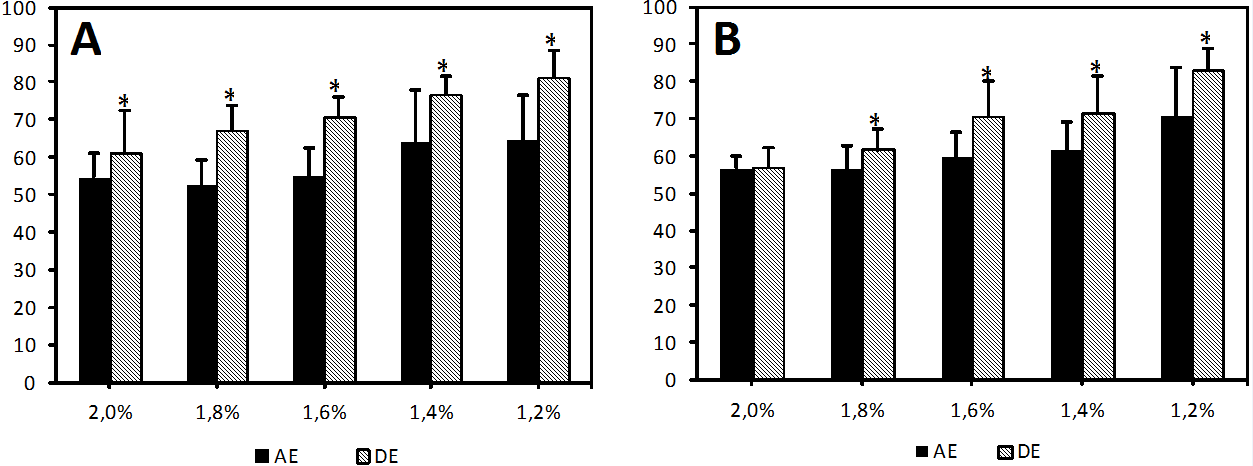One of the current methods to assess hypnosis and central depression during anesthesia is the bispectral index (BIS), which generates a number from 0 to 100. The purpose of the present study was to evaluate the changes in BIS during electrical or mechanical supra-maximal stimulation in order to investigate whether there is a relation between this index and motor response to nociception. Seven beagle dogs were included, two males and five females, which were anesthetized with isoflurane at 2.0, 1.8, 1.6, 1.4 and 1.2%. Different types of stimuli were employed at different procedures in the same animals with at least 15 days of interval. The BIS values were recorded during 60 seconds each time and mean values were obtained before (AE) and after (DE) the stimulus. Results were compared through paired t test or Wilcoxon's paired test (P<0.05). Significant differences were found between AE and DE values in almost every isoflurane concentration, as well as between the subtraction of these values, when compared between types of stimuli at 1.8 and 2.0%. In conclusion, the response to supra-maximal stimulation does change BIS values in dogs by decreasing the depth of anesthesia. The use of mechanical stimulation is suggested in order to avoid possible interferences of the electrical current and loss of data reliability.
inhalation anesthesia; anesthetic hypnosis; nociception; dogs

 Bispectral index changes before and after electrical or mechanical stimulation in isoflurane-anesthetized dogs
Bispectral index changes before and after electrical or mechanical stimulation in isoflurane-anesthetized dogs Thumbnail
Thumbnail


